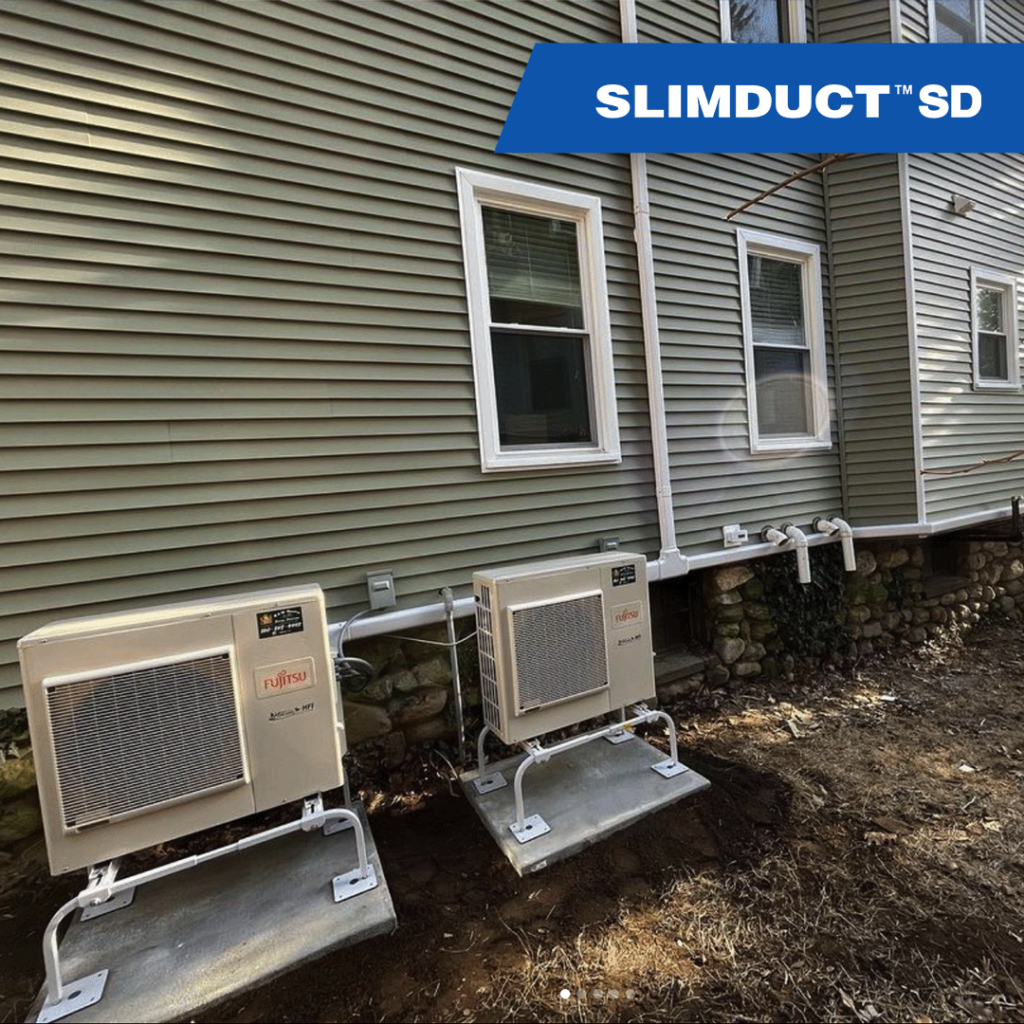Comparing Mini-Split Systems to Standard

How does mini-split heat pump systems and standard heat pump systems compare? In this post we will cover the differences in installation, energy efficiency and flexibility to understand why mini splits are popular for home heating and cooling.
Mini Split Heat Pumps.
Installation:
One of the main advantages of mini-split systems is their flexibility. You can install them indoors or outdoors in new and existing buildings using ductless or ducted versions of mini splits.
Single-Zone mini splits with wall-mounted, or cassette indoor units don’t require ductwork which makes them a popular choice for retrofitting older homes or buildings.
Ducted mini split systems may be used to retrofit an old standard system by reusing the existing ductwork with minimal changes while enjoying their quiet and efficient operation.
Flexibility:
Multi-Zone mini split systems can be ducted, ductless or a mixture of either. There is more flexibility for heating and cooling in spaces to accommodate different comfort zones. Each zone can set a different temperature which allows you to use less heating or cooling in parts of the home or office that may not be used often resulting in less use, equaling lower operating costs.
Energy Efficiency:
Mini-split heat pumps have a reputation for their energy efficiency. They use inverter technology, which allows the compressor to modulate its speed based on the heating or cooling needs of the space. This results in reduced energy consumption, lower utility bills, and increased comfort levels.
In heating, mini split heat pumps do not require electric auxiliary heat strips. They create heat using ambient conditions as well as heat of compression due to inverter technology. This makes them much more efficient than standard heat pumps.
Standard Ducted Heat Pumps.
Standard ducted heat pumps use inefficient single or two speed compressors and ducts to distribute warm or cool air, which makes it difficult to control individual room temperatures and comfort levels. Those systems stay off until the space temperature drops two degrees, turns on, runs at one or two speeds until it reaches the desired temperature and turns off. This cycle is repeated 24 hours a day leaving the spaces to experience hot/cold temps which are not desirable.
In heating, standard heat pumps create heating using ambient conditions but since the compressor runs at only one or two speeds, they require auxiliary resistant heat strips to help keep the space heated during the heating season. The heat strips also turn on during defrost as well making standard heat pumps very inefficient.
Inaba Denko America HVAC accessories work for both ductless mini split and standard systems, which is great news. Slimduct SD mini split covers provide better protection for refrigeration lines from weather, pests, and pet urine than foam covers.
The DSH-Up drain hose is suitable for cassette ceiling installations. You can also use it for mini split and unitary systems. Our accessories are quite versatile and can be installed as part of many different HVAC systems.
Mini-split systems offer several advantages over standard systems. They are easier to install, more energy-efficient, and provide greater flexibility in temperature control. Consider your space's needs and consult an HVAC technician to find the best system for you.

